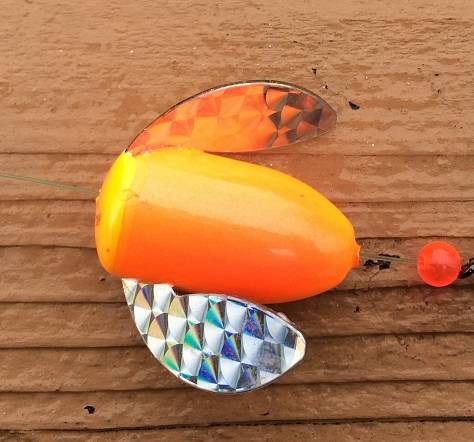January 14, 1992,
Tuesday
Today I will get some guidance in a – secret spot – with local fishing from Chris Morganroth, IV, great-grandson of the Olympic legend Morganroth. He is a hook and line fisher he says. And stated with more flair, a plunker. I’m going to be a plunker too, seems like a sure thing.
Most of the people around here seem to be plunkers: a line going to a 3-way swivel, off the swivel is a weight attached by a short line. The line continues down through a free-sliding florescent float and then a single hook is attached with a special knot that allows it to be drawn the line through the eye and use the loop to secure a cluster of roe to the hook. Hmm, seems difficult, maybe that why I don’t catch much, I can’t figure out how to set up a rig, if that’s what it’s called.
The other type of fishers are drifters. The typical riverboat, shaped like an elf’s shoe, are common on the weekends when the area is visited by folks from afar. The drifters use a wide variety of methods ranging from lighter weighted plunking to flies.
I have learned the plunking method and it has been my sole method thus far.
I hooked a fish the other day, or maybe it was a rock, no matter, I didn’t bring either into shore I am feeling confident that I will become a fisher of legend.
I will be fishing more secluded areas from now on and try to get away from the popular pools and stream confluences were the pack gathers like hungry bear. This is way out of my league. These fishermen watch me and I become self-conscious. What do I do when I catch a fish that I can’t reel in. “Oh, hi, excuse me my fish is running downstream.” “Sorry.” Everyone reels in to avoid me. I really hope the fish gets off. It might be normal for some of you but I’m not ready to chase a fish.
Chris brings me to the confluence of the Calawah and Bogachiel Rivers. A two-mile logging road leads through three small streams which have turned into ponds across the road. We are stopped by a series of ponds look noticeably deep. The potential danger causes me to park. We walk the rest of the way through an old forest corridor along the river. Looking over the high banks we see greenish-blue rushing water in a channel 4-5 feet deep and 10 feet across. Large submerged boulders create slow pockets and irregular currents. A gravel bar is growing on the side of the bend and a nice channel lies directly in front of us and we decide to fish.
Getting down from the higher spring runoff banks, which are usually 20 feet higher than the low water river bottom, is often aided by roots serving as a ladder or tree limbs and branches. This bank has clay and down we slide making a few attempts at handholds. This is not a good sign. I pick myself up and pull off clumps of clay from my pants and left ear.
This area has people fishing constantly, before sunup till after sundown, probably 365 days a year. We saw two fish caught on either side of us in the 1 ½ hours we were there. We catch no fish.


